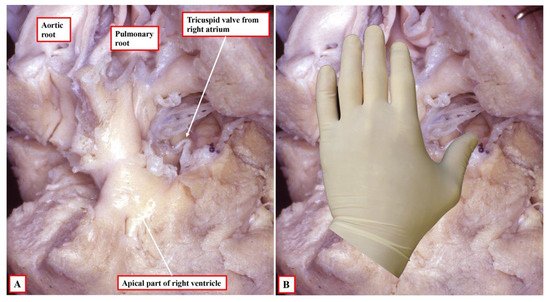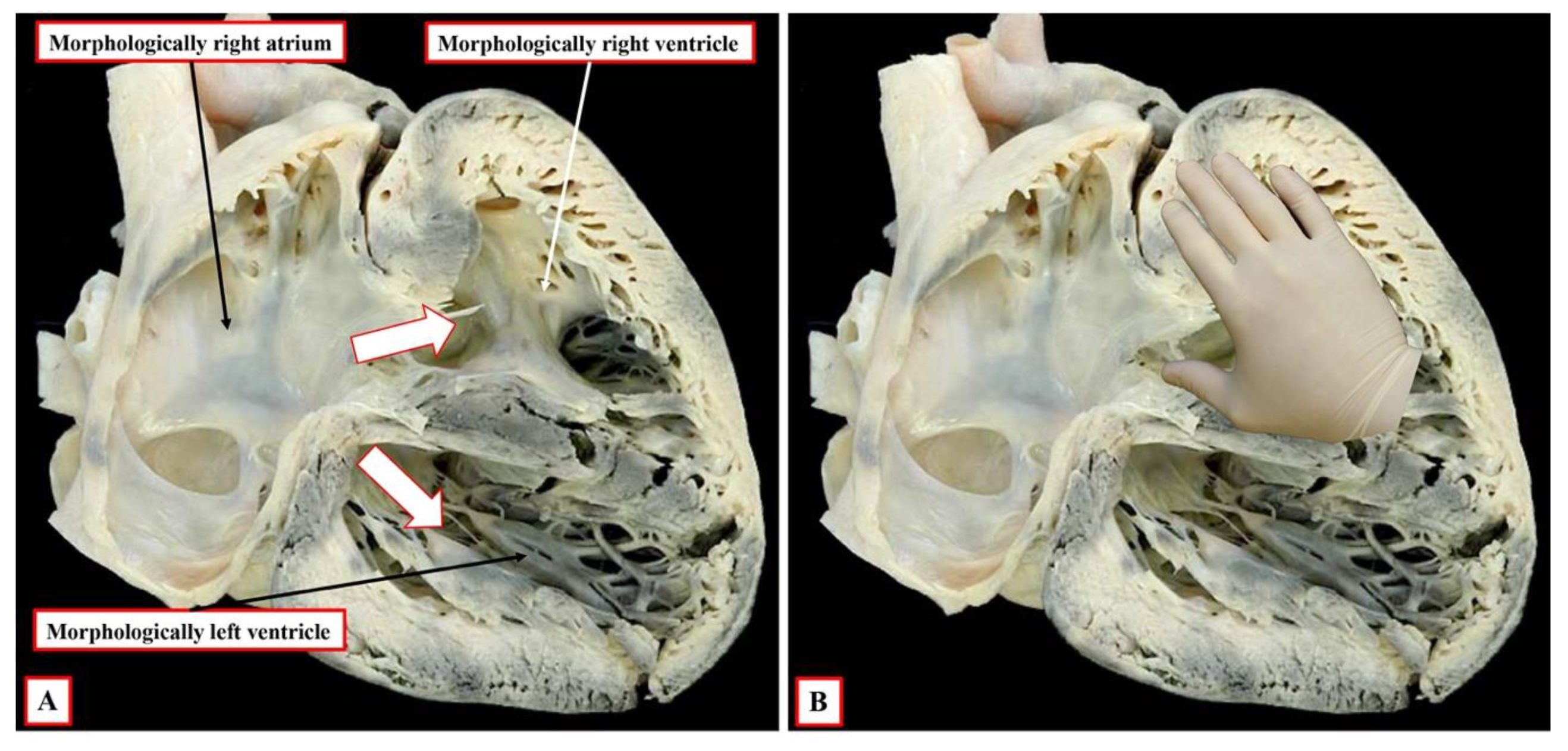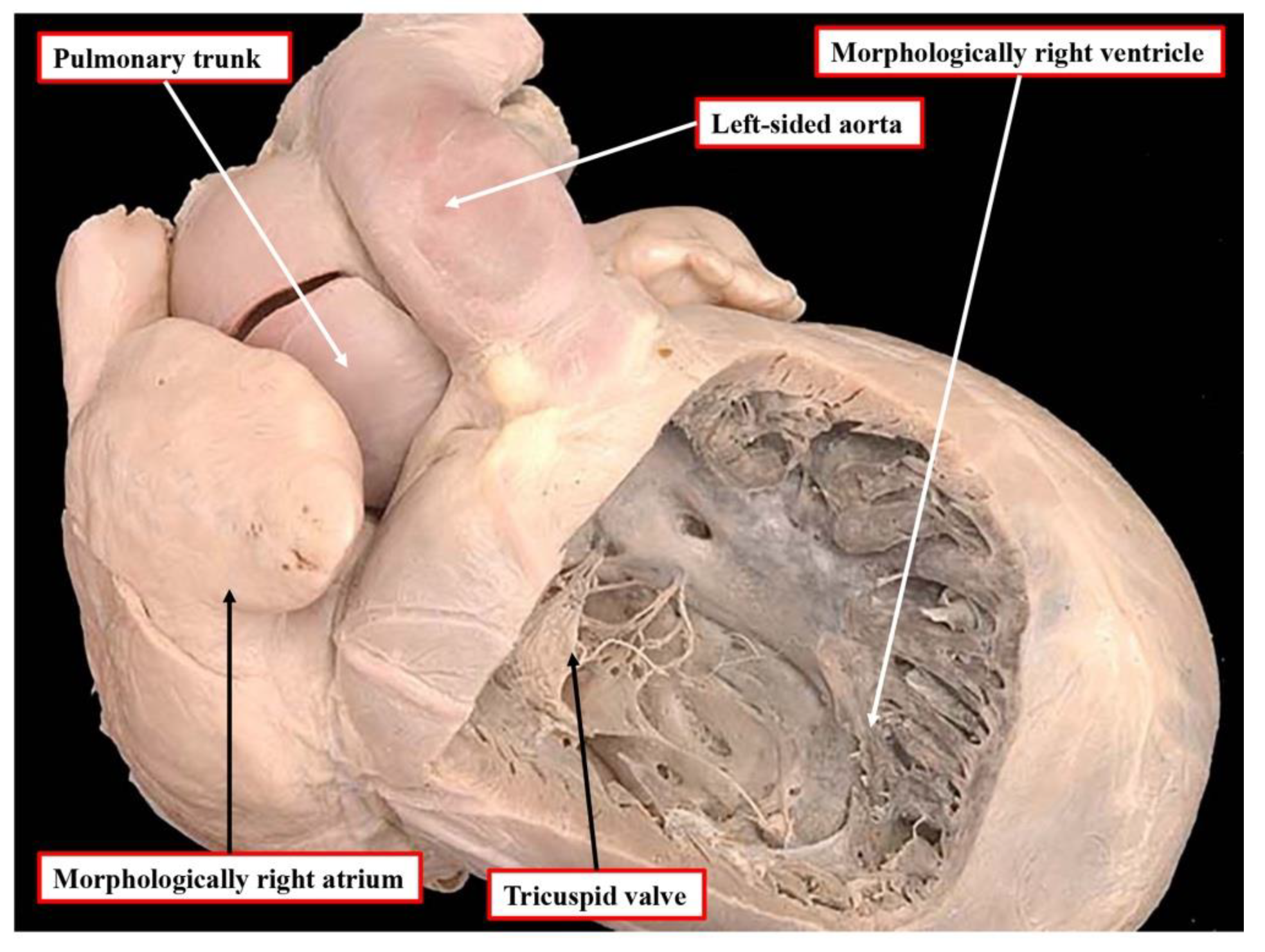You're using an outdated browser. Please upgrade to a modern browser for the best experience.
Please note this is a comparison between Version 2 by Dean Liu and Version 3 by Dean Liu.
In very rCare circumstances, individuals can be found in whom, when the atrial chambers are in their expected position, and the cavitidiac morphology described according to the principles of the atrial chambers are in continuity with their morphologically appropriate or inappropriate ventricles, the ventricular topology is incongruent with thesegmental sequential analysis can account for the vast majority of unusual and disharmonious heart connections present.
- ventricular topology
- segmental sequential analysis
- segmental connections
1. What Is Segmental Disharmony?
In very rare circumstances, individuals can be found in whom, when the atrial chambers are in their expected position, and the cavities of the atrial chambers are in continuity with their morphologically appropriate or inappropriate ventricles, the ventricular topology is incongruent with the connections present. As yet, researchers do not know how, or why, these unusual arrangements might be produced. On occasion, nonetheless, in the presence of usual atrial arrangement and concordant atrioventricular connections, the ventricular topology will be left-handed rather than showing the anticipated right-handed pattern (Figure 1). To emphasise again, such cases are exceedingly rare [1]. As is the case in the heart shown in Figure 1, it is usual to find additional anomalies, such as straddling atrioventricular valves or double outlet right ventricle in these rare examples. For those using the sequential segmental approach, these rare cases represent one of the two occasions when, in addition to describing the atrioventricular connections, it is also necessary specifically to account for the disharmonious ventricular topology. For those using the segmental approach, however, the cases represent a major flaw within the system. It is not possible when using the segmental “sets” to indicate that the so-called “alignments” are disharmonious with the combinations, as coded in the sets themselves.

Figure 1. The images show a rare example of segmental disharmony. Panel (A) shows the left-sided morphologically right ventricle, which is connected through the tricuspid valve to the right-sided morphologically right atrium; in other words, there are concordant atrioventricular connections. There is also a double outlet from the right ventricle. Panel (B) shows that, despite the concordant atrioventricular connections, there is left-handed ventricular topology. This is segmental disharmony.
2. When Is It Also Necessary Always to Account for Ventricular Topology?
Disharmony between the segmental arrangements and the connections between them is one of the situations in which description of ventricular topology is mandatory so as to preserve comprehension, but these situations are exceedingly rare. The other situation is encountered with far greater frequency. It is found when, in hearts with isomeric atrial appendages, each atrium is connected to its own ventricle in a biventricular fashion. In the original sequential segmental approach, this arrangement was said to be “ambiguous” [2][3]. In fact, there is no ambiguity. In these settings, half of the atrioventricular junctions are always concordantly connected, while the other half are discordantly connected. The connections, therefore, are properly described as being biventricular and mixed [4]. In such settings, a full description requires that account to be taken, on the one hand, of the type of isomerism, but on the other hand, of the ventricular topology. Thus, the description, for example, of left isomerism with left-handed ventricular topology, is explicit. In these circumstances, it is then also necessary to take account of the venoatrial connections. When the atrial appendages are isomeric, the systemic and pulmonary veins can join the atrial chambers to produce quasi-usual or quasi-mirror-imaged venous drainage. If the venoatrial connections produced quasi-mirror-imaged drainage in the example of left isomerism and left-handed topology described above, it might be presumed, in the setting of concordant ventriculo-arterial connections with parallel arterial trunks, that the atrioventricular connections were also concordant. This might then induce the inference that the atrioventricular node would be in its “regular” position. In reality, in such a setting, because of the left-handed topology and left isomerism, it is very likely that the ventricular conduction axis will arise from an anteriorly located atrioventricular node [5].
3. Are Criss-Cross Hearts the Same as Those with Incongruent Segmental Arrangement?
As already discussed, the essence of topology is that the arrangement cannot be changed simply by tilting or rotating the object under consideration. The essence of the criss-cross arrangement, however, is that the relationships of the chambers within the heart are changed by the process of rotation [6]. Thus, it is very rare for a criss-cross heart also to show incongruent segmental arrangement. The heart shown in Figure 1 represents one of those rare occurrences when the heart is not only twisted, but the ventricular topology is disharmonious with the atrioventricular connections present. Criss-cross hearts are much more frequent with harmonious atrioventricular segmental arrangements. In these settings, despite the twisting of the ventricular mass along its long axis, the topological arrangement remains as expected for the atrioventricular connections present. The twisting along the long axis takes the morphologically right ventricle into an unexpected position but does not change its topology [7]. In congenitally corrected transposition with the usual atrial arrangement, for example, the morphologically right ventricle is expected to be left-sided. In the criss-cross situation, the twisting moves the right ventricle to a right-sided location. In the heart with usual atrial arrangement and concordant atrioventricular connections, the twisting at the atrioventricular junctions moves the morphologically right ventricle into a left-sided position, but with retention of the anticipated right-handed ventricular topology (Figure 2).

Figure 2. The images show a heart with usual atrial arrangement, concordant atrioventricular connections, with twisting of the atrioventricular connections, as shown in panel (A), producing the “cross-cross” arrangement (white arrows with red borders). As shown in panel (B), despite the rotation of the heart produced by the twisting, the right ventricle still shows right-handed topology, as expected for hearts with usual atrial arrangement and concordant atrioventricular connections.
4. What about Incongruent Segmental Arrangements at Ventriculo-Arterial Level?
When the segmental approach was first introduced, it was not always easy to establish the fashion in which the cavities of the segments were joined together across the atrioventricular and ventriculo-arterial junctions during clinical investigation. In these early days, prior to the introduction of cross-sectional echocardiography, it was conventional to use the “loop rule” to determine the variants of transposition. Thus, in individuals with usual arrangement, the finding of a left-sided aorta arising from the morphologically right ventricle came to be considered an indicator of the presence of congenitally corrected transposition. Indeed, in some centres, even nowadays, “l-transposition” is used as if synonymous with congenitally corrected transposition. The danger of using this approach had already been identified prior to the widespread use of echocardiography. In a seminal study conducted at Great Ormond Street, in collaboration with Dr Van Praagh himself, it was shown that in individuals with regular transposition, in other words, concordant atrioventricular and discordant ventriculo-arterial connections, around one-sixth of those having usual atrial arrangement have left-sided aortas (Figure 3). This investigation, unfortunately, was never published as a full manuscript and is available only in abstract form [8]. For those using the Van Praaghian segmental sets, the segmental disharmony does not create the problems encountered for the atrioventricular junctions. This is because the arrangement, as shown in Figure 3, would be described as transposition {S,D,L}. The inference to be made from the combination of {S,D,*) is that the atrioventricular connections are concordant. The description of transposition indicates that the ventriculo-arterial connections are discordant. Similar ventriculo-arterial disharmony can be found in the setting of the double outlet right ventricle. Thus, in most instances of double outlet right ventricle with usual atrial arrangement and concordant atrioventricular connections, the aortic root is either normally related to the pulmonary trunk or else anterior and rightward. In the past, the anterior location of the aorta would be considered by some as indicative of the presence of “transposition”.

Figure 3. The heart shows an example of transposition with left-sided aorta. This is “l-transposition”, but the heart is not congenitally corrected. There are concordant atrioventricular and discordant ventriculo-arterial connections. This is an example of disharmony between the ventricular and arterial segments of the heart.
Those using both the segmental and sequential segmental approaches now accept that transposition is synonymous with discordant ventriculo-arterial connections. The finding of an anterior and left-sided aorta can also rarely be found when both arterial trunks arise from the right ventricle when there is usual atrial arrangement and concordant atrioventricular connections. This is another example of disharmony at the ventriculo-arterial junctions. It would properly be described by those using the segmental approach as a double outlet right ventricle {S,D,L}. It follows that it is inappropriate to consider an anterior and left-sided aorta as being indicative of congenitally corrected transposition. Most individuals with congenitally corrected transposition do have left-sided aortas, but not all. Anterior and right-sided aortas are the rule when congenitally corrected transposition is found in individuals with a mirror-imaged atrial arrangement. It also follows, therefore, that “d-transposition” should not be used as a synonym for individuals having concordant atrioventricular and discordant ventriculo-arterial connections.
References
- Anderson, R.H.; Smith, A.; Wilkinson, J.L. Disharmony between atrioventricular connections and segmental combinations: Unusual variants of “crisscross” hearts. J. Am. Coll. Cardiol. 1987, 10, 1274–1277.
- Tynan, M.J.; Becker, A.E.; Macartney, F.J.; Quero-Jimenez, M.; Shinebourne, E.A.; Anderson, R.H. Nomenclature and classification of congenital heart disease. Br. Heart J. 1979, 41, 544–553.
- Shinebourne, E.A.; Macartney, F.J.; Anderson, R.H. Sequential chamber localization: Logical approach to diagnosis in congenital heart disease. Br. Heart J. 1976, 38, 327–340.
- Anderson, R.H.; Shirali, G. Sequential segmental analysis. Ann. Pediatr. Card 2009, 2, 24–25.
- Smith, A.; Yen Ho, S.; Anderson, R.H.; Connell, M.G.; Arnold, R.; Wilkinson, J.L.; Cook, A.C. The diverse cardiac morphology seen in hearts with isomerism of the atrial appendages with reference to the disposition of the specialised conduction system. Cardiol. Young 2006, 16, 437–454.
- Anderson, R.H.; Shinebourne, E.A.; Gerlis, L.M. Criss-cross atrioventricular relationships producing paradoxical atrioventricular concordance or discordance: Their significance to nomenclature of congenital heart disease. Circulation 1974, 50, 176–181.
- Seo, J.W.; Yoo, S.J.; Ho, S.Y.; Lee, H.J.; Anderson, R.H. Further morphological observations on hearts with twisted atrioventricular connections (criss-cross hearts). Cardiovasc. Pathol. 1992, 1, 211–217.
- Carr, I.; Tynan, M.J.; Aberdeen, E.; Bonham-Carter, R.E.; Graham, G.; Waterson, D.J. Predictive accuracy of the loop rule in 109 children with classical complete transposition of the great arteries. Circulation 1968, 38, VI-52.
More
